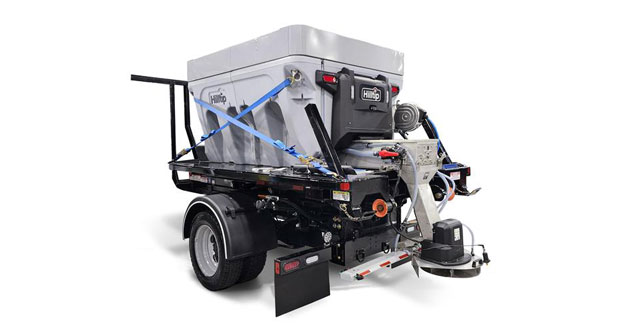Successful snow and ice management professionals have learned the spring and summer months are the best time to address many important aspects of their snow businesses. While others refuse to think about the snow season in the off-season, these pros are proactively improving their snow processes, researching innovative technologies and making major decisions affecting profitability.

The best place to start with off-season planning is with an analysis of what happened last winter. Most likely, you had successes and failures. Some things went very well and others didn’t. Many companies repeat their mistakes simply because they never take the time to analyze their operations and take corrective action. I suggest you take some time to understand what you need to do to improve your snow business before you dive into planning for the upcoming winter.
Define & document
Since this analytical process is an annual event, I recommend establishing a defined and documented process for it. Who needs to be involved? What information do you want at your disposal? Where is this information and who will retrieve it? When will the analysis take place? Will this be done in one meeting or spread out over multiple meetings? Who will take notes and where will these notes be stored?
There are a number of factors to consider when analyzing last winter’s snow business. As you consider each factor, make note of anything that needs to be addressed before next winter. I recommend rating each factor using a defined rating system, along with capturing any specific positive or negative comments regarding that factor.
Here’s a partial list of factors to consider:
> Weather data and trends
> Contract portfolio
> Sales process and results
> Customer satisfaction
> Contract management
> Invoicing
> Subcontractor performance
> Operational controls and procedures
> Mobilization speed
> Routing
> Snow watch procedures
> Mobilization decisions
> Equipment performance, usage, maintenance and repair
> Material purchasing and storage
> Accidents
> Risk management processes
> Staffing and training
> Employee turnover and performance
> Administrative functions
> Unused capacity
This analysis is best done at the tail end of winter to ensure important issues aren’t forgotten. However, it’s not too late. If you didn’t complete this analysis yet, now is the time to get it done.
Next, you should begin planning for the upcoming snow season. Start with an understanding of the long-term vision of the company. Clarifying this vision will provide you with a road map and greatly assist you with establishing sales goals for everyone with sales accountability. What type of growth is desired in terms of your service mix, geographical mix, customer mix and contract type mix?
Aside from establishing sales goals, planning may encompass any of the items listed above or anything else that will better position you for success. One area of particular interest to me is the use of innovative technology. Incorporating new technology into your snow business requires steps to ensure the technology is effectively leveraged. That’s why off-season planning is so critical. Waiting until fall to think about the upcoming snow season will effectively preclude you from making significant improvements in your snow business.
With an established and documented process for your off-season analysis and planning, your snow business is more likely to be healthy, profitable and sustainable. You may even discover that snow and ice management is the most profitable service you provide.
I hope you’re having a great off-season.

